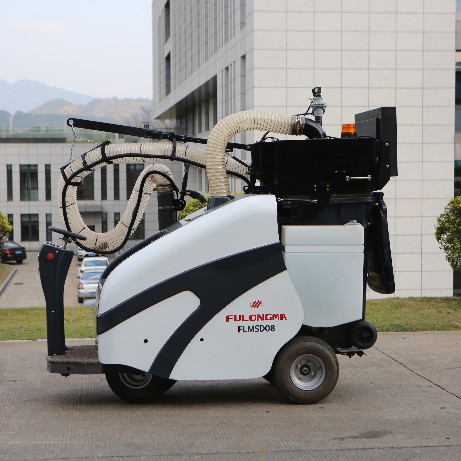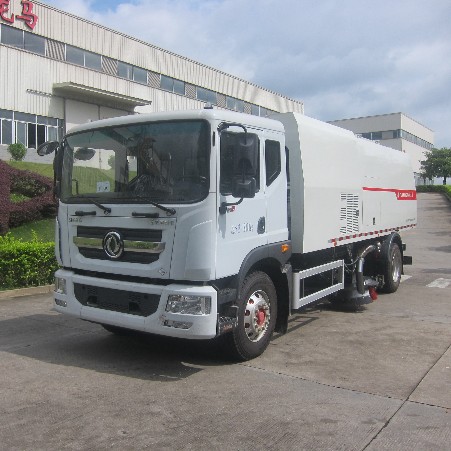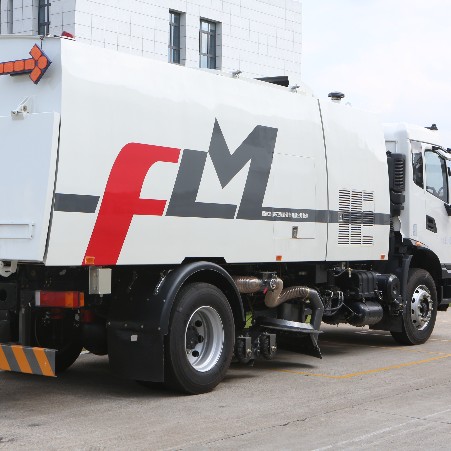Cities buzz with life, and while people and vehicles are constantly on the move, there’s one unsung hero who works tirelessly behind the scenes to keep our streets spotless: the street sweeper vacuum truck. These marvels of modern engineering are more than just big machines with brooms—they are intricate systems designed to tackle urban debris, pollution, and litter.
At first glance, a street sweeper vacuum truck might seem like a simple contraption—a large vehicle with a brush and a vacuum system. However, the reality is far more complex. These trucks combine multiple technologies to clean streets efficiently, making them essential for urban maintenance.

What Makes a Street Sweeper Vacuum Truck?
-
Chassis and Body: Street sweeper vacuum trucks are built on heavy-duty truck chassis designed to handle the stress of continuous operation. The body of the truck houses the various components essential for sweeping and vacuuming.
-
Sweeping Mechanism: At the front of the truck, you’ll find a series of rotating brushes. These brushes, often made from durable materials like nylon or steel, sweep debris from the road surface into the path of the truck.
-
Vacuum System: The vacuum system is the heart of the street sweeper truck. After the brushes move debris into a central area, powerful vacuum fans suck the debris into a storage hopper. This system must be robust to handle a wide range of materials, from dust to larger litter.
-
Hopper: The debris collected by the vacuum system is stored in a hopper, a large container mounted on the truck. The hopper is designed to handle significant volumes of waste and is equipped with a mechanism for easy unloading.
-
Water Spray System: To minimize dust and improve cleaning efficiency, many street sweeper vacuum trucks feature a water spray system. This system moistens the road surface, preventing dust from becoming airborne and ensuring a more thorough clean.
The Technology Behind Street Sweeper Vacuum Trucks
The engineering of street sweeper vacuum trucks involves a combination of mechanical, hydraulic, and electronic systems. Here’s a closer look at the key technologies:
1. Hydraulic Systems
Hydraulic systems power the brushes and control the vacuum operation. They use pressurized fluid to move components smoothly and efficiently, allowing for precise control over sweeping and vacuuming functions.
2. Vacuum Technology
The vacuum system employs high-powered fans or blowers to create suction. These fans can generate a significant airflow to ensure effective debris collection. The vacuum system is often equipped with filters to trap fine dust particles, improving air quality and truck performance.
3. Advanced Filtration
Modern street sweeper trucks feature advanced filtration systems that separate fine dust from the air before it’s expelled. This is crucial for reducing air pollution and ensuring the truck’s vacuum system remains efficient.
4. Smart Technology
Many new models are equipped with smart technology, including GPS tracking, real-time data monitoring, and automated controls. These features enhance the truck’s efficiency by optimizing routes, tracking performance, and reducing fuel consumption.

The Role of Street Sweeper Vacuum Trucks in Urban Cleanliness
Street sweeper vacuum trucks play a critical role in maintaining the aesthetic and environmental quality of urban areas. Their benefits extend beyond just visual appeal:
1. Reducing Pollution
By removing debris and dust, these trucks help reduce air pollution. Dust and litter on roads can contribute to respiratory problems and other health issues. Regular sweeping helps mitigate these risks, improving overall public health.
2. Preventing Clogged Drains
Debris that isn’t cleaned from the streets can end up in storm drains, leading to blockages and flooding. Street sweeper vacuum trucks help prevent these issues by keeping streets clear of materials that might otherwise enter the drainage system.
3. Enhancing Safety
Clean streets are safer streets. By removing litter and debris, street sweeper trucks reduce the risk of accidents caused by slippery surfaces or obstructions. This contributes to safer driving conditions for everyone.
4. Aesthetic Improvement
A clean city is a pleasant city. Regular use of street sweeper vacuum trucks ensures that urban areas remain attractive and welcoming, enhancing the quality of life for residents and visitors alike.
Future Trends in Street Sweeper Vacuum Trucks
The field of street sweeping is evolving, with innovations aiming to make these trucks even more efficient and eco-friendly:
1. Electric and Hybrid Models
As cities strive for greener solutions, electric and hybrid street sweeper vacuum trucks are becoming more common. These models offer lower emissions and reduced noise, making them suitable for use in more sensitive areas.
2. Enhanced Smart Features
Future street sweeper trucks will likely incorporate even more advanced smart technology, including AI-driven route optimization, predictive maintenance, and enhanced real-time data analysis.
3. Eco-Friendly Materials
Manufacturers are exploring new materials for brushes and filters that are both effective and environmentally friendly. These innovations aim to reduce the ecological footprint of street cleaning operations.

Conclusion
Street sweeper vacuum trucks are more than just heavy-duty machines—they are crucial players in the urban maintenance team, keeping our cities clean, safe, and healthy. Their advanced technology and engineering marvels ensure that streets are not only free of debris but also contribute to a better environment. As technology continues to advance, these trucks will undoubtedly become even more efficient, further enhancing their vital role in city cleanliness.
By understanding the complex systems behind street sweeper vacuum trucks, we gain a greater appreciation for the engineering that keeps our urban landscapes pristine. So next time you see one of these impressive machines at work, you’ll know just how much effort goes into keeping our streets clean and beautiful!






